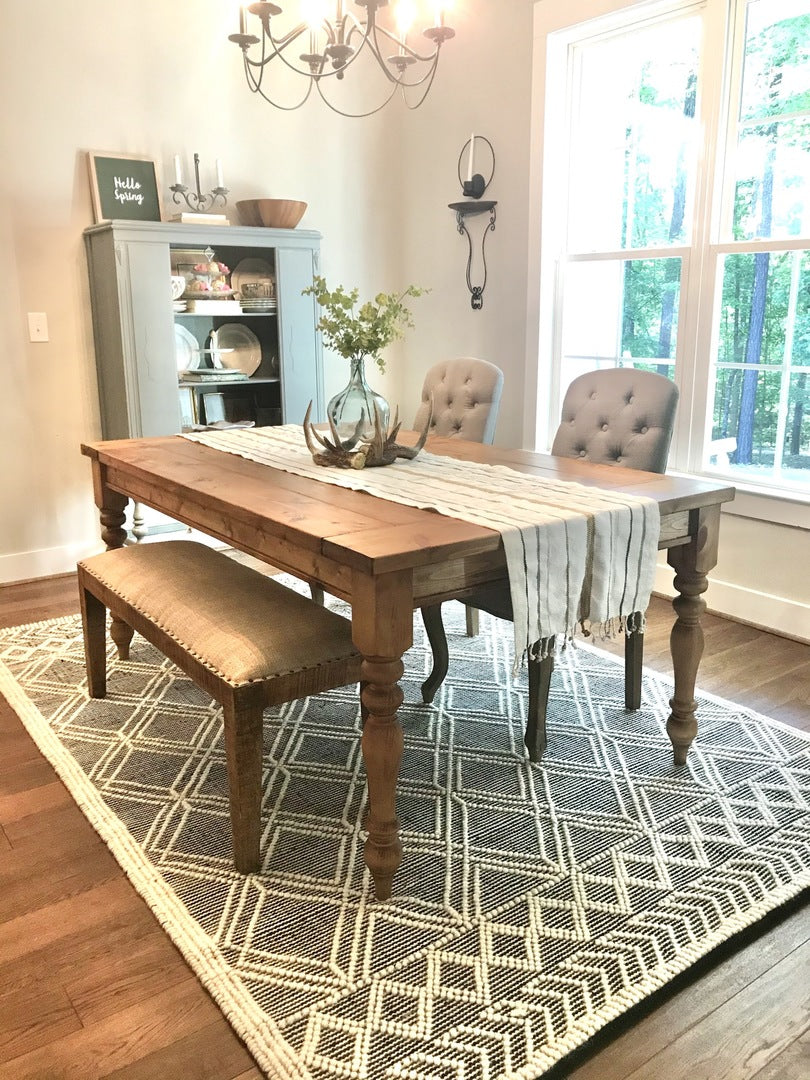Dining Room Table Legs That Incorporate Capability and Modern Layout
Dining Room Table Legs That Incorporate Capability and Modern Layout
Blog Article
An In-depth Consider Table Leg Styles: Finding the Perfect Suit
Selecting the right table leg style is important for both aesthetic allure and functional performance. Traditional 4 legs use timeless elegance and security, while the pedestal base provides boosted legroom and a contemporary look. For those with bigger tables, trestle legs guarantee sturdy assistance, whereas hairpin legs present a mid-century contemporary ambiance with their minimalist layout. The x-shaped legs blend modern style with enhanced security. Each of these options brings one-of-a-kind benefits, making the selection greater than simply a matter of choice. Check out better to find which design completely enhances your dining room and lifestyle.
Conventional 4 Legs
Amongst the numerous kinds of dining table leg styles, the standard four-leg layout stays an ageless option for lots of houses. This classic configuration provides a harmonious blend of performance and aesthetics, making it a perennial favorite. Four legs provide balanced support, guaranteeing the table remains steady and capable of bearing substantial weight. This is especially beneficial for homes that often hold big gatherings or utilize their table for multiple objectives, such as job or crafting.
From an aesthetic viewpoint, the conventional four-leg style can be quickly adapted to numerous indoor styles. Whether crafted from wood, steel, or a mix of materials, these legs can be intricately sculpted, smooth and minimalistic, or anything in between. Their convenience enables them to complement both rustic and modern setups perfectly.
Furthermore, the uncomplicated framework of the four-leg design facilitates convenience of motion and positioning within a space. Unlike more facility bases, this style decreases blockages, providing enough legroom for diners. In recap, the standard four-leg dining table leg design marries sustaining beauty with sensible performance, making it a sharp option for those looking for both type and feature in their dining furnishings.
Pedestal Base
Often celebrated for its sophisticated and space-efficient layout, the stand base is a distinguished option to the standard four-leg arrangement in eating table leg designs. Without corner legs, diners are afforded higher flexibility of motion, making it an optimal choice for round and oblong tables that promote even more intimate and comprehensive events.
The main column itself provides a canvas for detailed styles and artistic expressions, including an aspect of visual passion underneath the table. In summary, the stand base combines capability with design, making it a refined and sensible choice for diverse eating environments.
Trestle Legs
Trestle legs give a robust and classic foundation for eating tables, defined by their horizontal cross-bracing and strong support light beams. Stemming from middle ages times, this design has actually developed yet preserved its necessary structure, making it a seasonal fave in both standard and modern settings. The main trestle beam, usually supported by 2 or more vertical blog posts, provides exceptional stability, enabling larger table sizes without the need for added legs.
A considerable benefit of trestle leg tables is the sufficient legroom they supply. Unlike tables with 4 edge legs, the absence of blockages at the table's sides supplies unblocked room for chairs and diners, boosting convenience and access. This makes trestle tables suitable for accommodating larger celebrations, whether in a dining-room or a reception hall.
From rustic farmhouse to sleek contemporary layouts, trestle legs can be customized to match specific preferences. Their enduring charm and functional advantages make trestle legs a compelling selection for those seeking both style and usefulness in their eating table.
Barrette Legs

The charm of barrette legs depends on their simpleness and adaptability - dining room table legs. Available in a series of products, including steel and brass, they can be finished in numerous shades to match various interior designs. Whether coupled with a rustic wood tabletop or a modern glass surface area, barrette legs easily blend performance with a touch of classic Visit Your URL charm
Sturdiness is another notable attribute of hairpin legs. Regardless of their fragile appearance, these legs are engineered to bear considerable weight, guaranteeing the table remains stable and safe. In addition, they are reasonably simple to set up, making them a preferred option for DIY fanatics and professional furniture makers alike.
X-Shaped Legs

Created from products such as steel, timber, or a mix of both, X-shaped legs can be tailored to match numerous design choices. Steel legs often offer a streamlined and industrial feeling, perfect for loft-style this website homes and top article modern-day eating rooms. On the various other hand, wood X-shaped legs use a warmer, much more rustic appeal, suitable for farmhouse or diverse interiors. The versatility in products allows property owners to personalize their table to much better fit their overall layout plan.
Furthermore, the design behind X-shaped legs makes sure even weight circulation, reducing the threat of tottering and boosting longevity. This makes them especially fit for larger table that require additional assistance. Essentially, X-shaped legs blend sensible engineering with modern-day aesthetic appeals, making them a classic selection for diverse dining settings.
Conclusion
A comprehensive understanding of table leg designs exposes the distinct characteristics and benefits of each design. Traditional 4 legs supply stability and classic allure, while stand bases supply legroom and a streamlined appearance. Trestle legs make certain durable support for larger tables, and barrette legs introduce a mid-century contemporary visual. X-shaped legs integrate contemporary layout with boosted security. Choosing the suitable leg design makes sure both useful and aesthetic fulfillment in any type of eating space.
Report this page